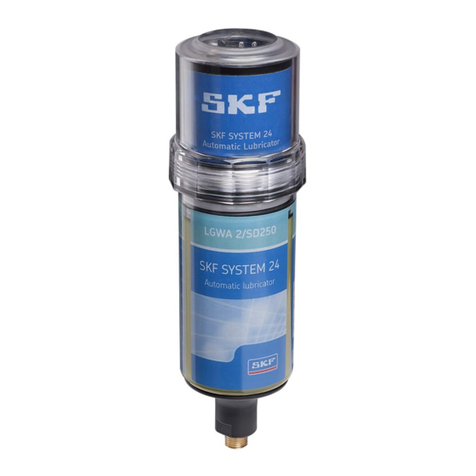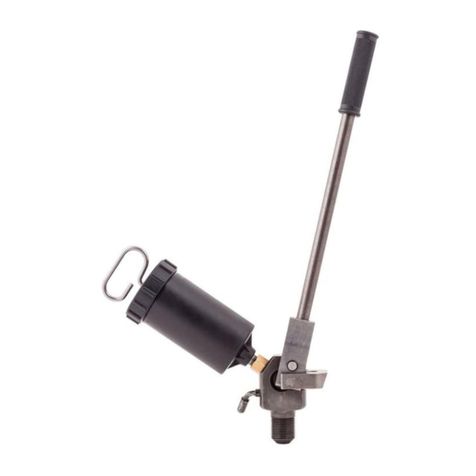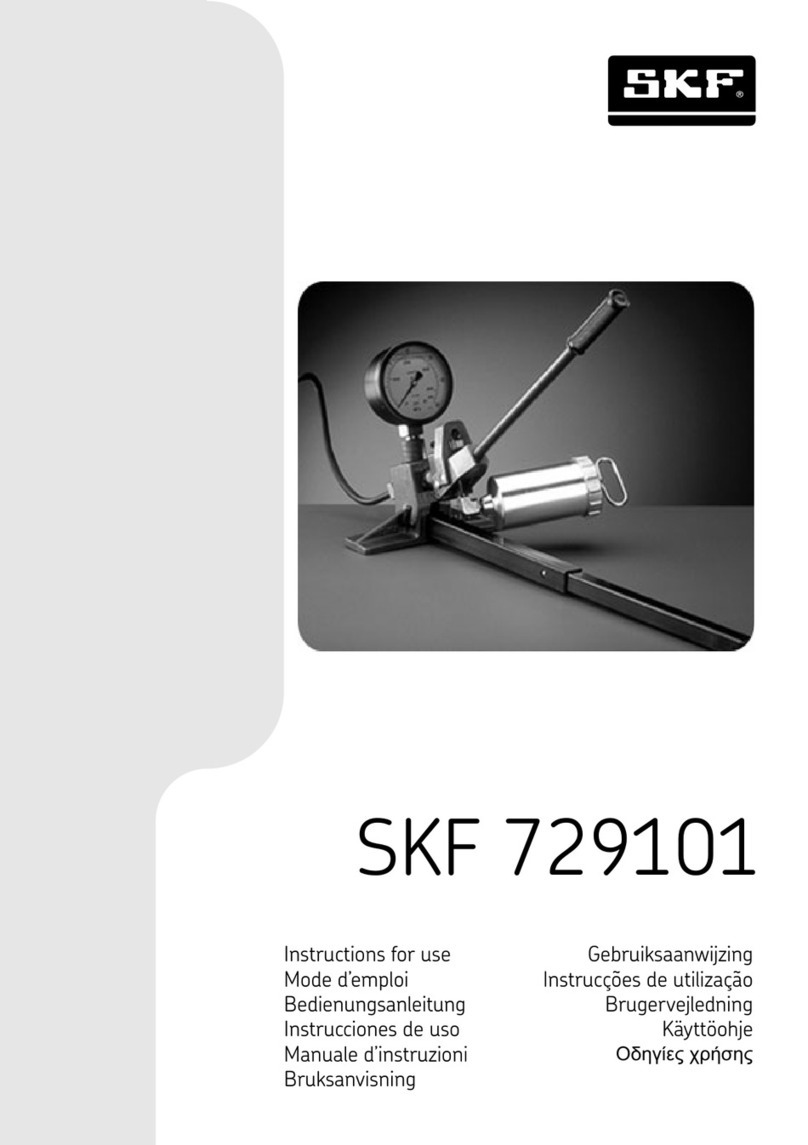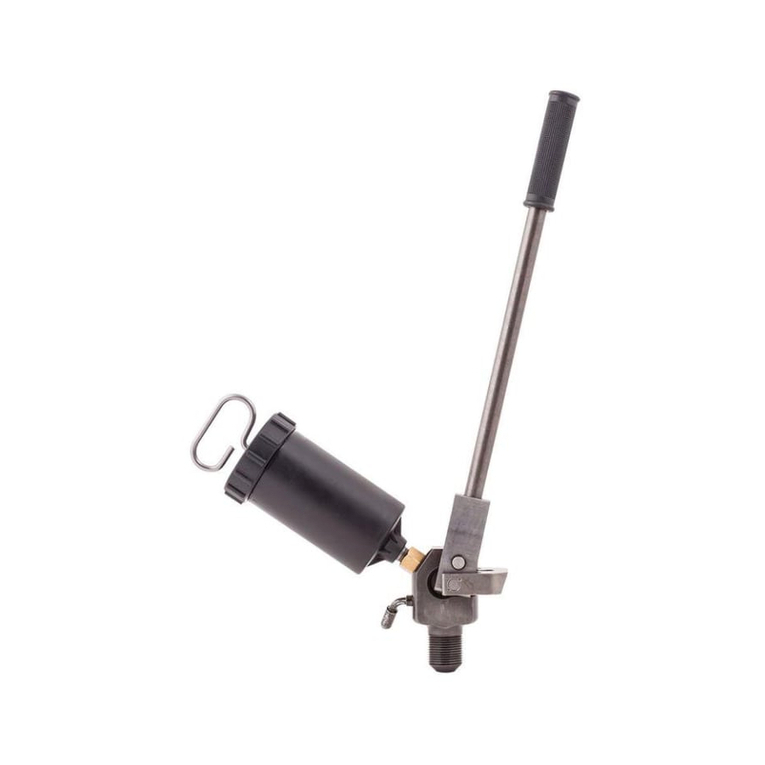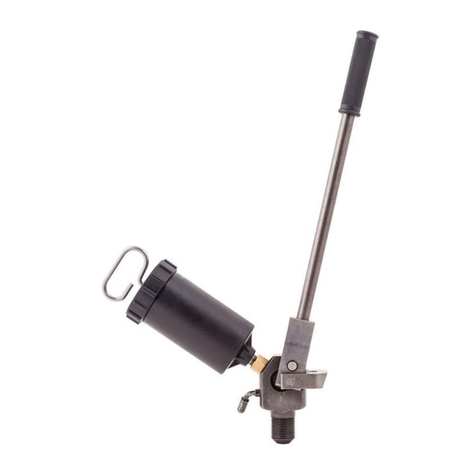
3EN
READ THIS FIRST
Safety precautions
Read this instruction for use fully. Follow all safety
precautions to avoid personal injury or property
damage during equipment operation. SKF cannot
be responsible for damage or injury resulting from
unsafe product use, lack of maintenance or incorrect
equipment operation. In case of any uncertainties as
regards the use of the equipment contact SKF.
Failure to comply with the following could cause
equipment damage and personal injury.
• Do ensure that the equipment is only operated
by trained personnel.
• Do wear proper personal protective gear, such
as eye protection and protective gloves, when
operating the equipment.
• Do inspect the equipment and all accessories
carefully before use.
• Do not use damaged components or modify the
equipment.
• Do use clean recommended hydraulic oils
(SKF LHMF 300, LHDF 900 or similar).
• Do not use glycerin or water based fluids as a
pressure medium. Premature equipment wear
or damage can result.
• Do not use the equipment above the stated
maximum working pressure.
• Do not extend the handle in order to reduce
the required force to reach maximum working
pressure. Use hand pressure only.
• Do not apply high pressure oil to the oil inlet
connection.
• Do not use the injector with accessories, which
are rated below the maximum working pressure
of the injector.
• Do not use washers on sealing surfaces.
• Do use a pressure gauge to monitor the oil
outlet pressure.
• Do ensure that all the air has been removed
from the hydraulic system before pressurising
the hydraulic system.
• Do prevent the workpiece (e.g. bearing,
gearwheel or similar item) from being forcibly
ejected upon sudden release of pressure
(e.g. by use of retaining nut).
• Do not handle high pressure pipes when
pressurized. Oil under pressure can penetrate
the skin, causing serious injury or death. If oil is
injected under the skin, seek medical attention
immediately.
• Do not use damaged high pressure pipes.
Avoid sharp bends and kinks when connecting
pipes. Sharp bends and kinks could internally
damage the pipe leading to premature failure.
Applying pressure to a damaged pipe may cause
it to rupture.
• Do not lift the equipment by the pipe or
couplings.
• Do follow local safety regulations.
• Do service the equipment by a qualified
hydraulic technician or SKF Repair Centre.
• Do replace worn or damaged parts with
genuine SKF parts.
EC Declaration of conformity
We, SKF Maintenance Products, Meidoornkade 14,
3992 AE Houten, The Netherlands herewith declare
under our sole responsibility that the products
described in these instructions for use, are in
accordance with the conditions of the following
Directive(s):
MACHINERY DIRECTIVE 2006/42/EC
and are in conformity with the following standards:
EN–ISO 12100, EN–ISO 14121–1, EN–ISO 4413
Houten, The Netherlands, September 2019
Mrs. Andrea Gondová
Manager Quality and Compliance






